Seeing is believing? Welcome to the post-truth era disrupting our sense of reality
Generative AI tools are advancing at breakneck speed, disrupting our perception of reality. But there is a silver lining to all this.
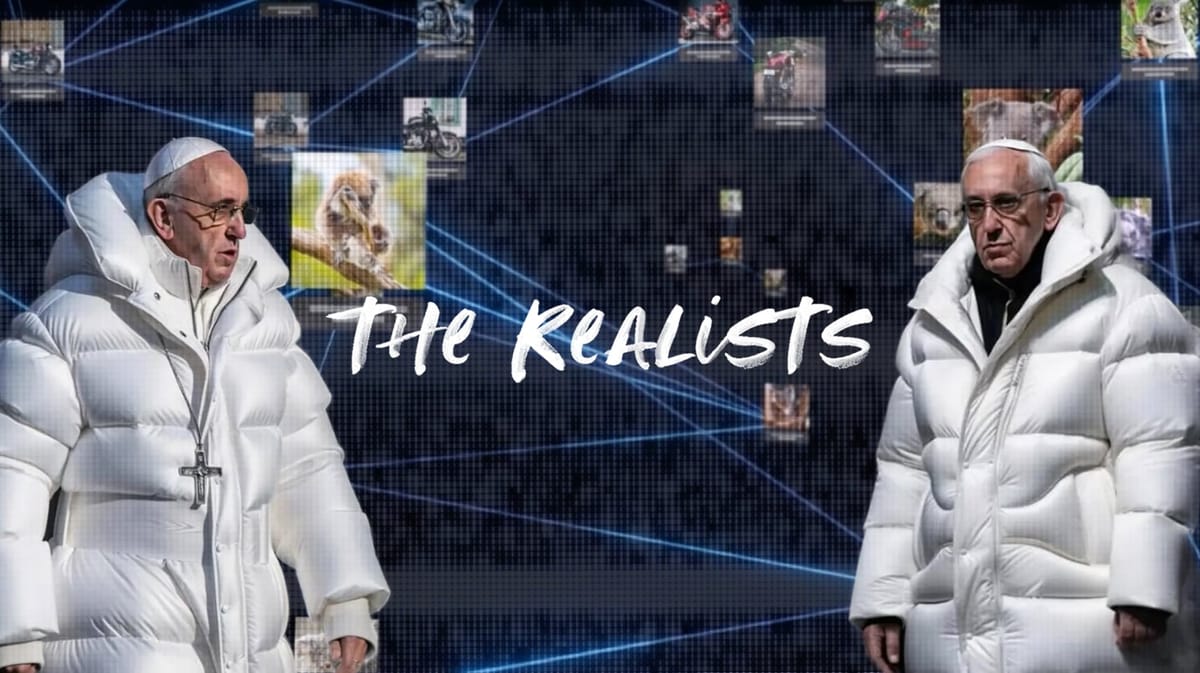
Remember the adage “pics or it didn’t happen?”
In this brave new technological age, the saying feels as dated as a rotary phone or a fax machine – something from the past that did not age well and feels positively antiquated now. Because with AI Image Generator tools like Midjourney, DALL·E and Stable Diffusion – to name a few – it is becoming hard to make a distinction between what is real and what is fabricated or manipulated. It is so easy to produce fake photos of real people and events. Remember the AI generated photo of Pope Francis in the white puffer jacket?
How a Royal scandal put the spotlight on manipulated images
This brand new “problem” came to the forefront again earlier this week when Kensington Palace shared a Mother’s Day family portrait of Catherine, Princess of Wales and her 3 children that was immediately met with a “kill notice” by the world’s leading photo agencies. Why? It was heavily retouched and thus did not meet the agencies’ photo standards.
Hours later an (unprecedented) apology was posted on the official social media accounts of the Prince and Princess of Wales, stating “Like many amateur photographers, I do occasionally experiment with editing. I wanted to express my apologies for any confusion the family photograph we shared yesterday caused. I hope everyone celebrating had a very happy Mother’s Day. C”
It is easy to be sucked into the rabbit hole of the whole saga. To casual observers this may seem like a trivial issue - in a world experiencing devastating conflicts. But details surrounding the story are so odd and unprecedented, that they deserve close attention. They may be a harbinger of a disturbing post-truth era that is already here, fueled by digital tools.
Charlie Warzel at The Atlantic published a brilliant piece titled “Kate Middleton and the End of Shared Reality”.
Warzel wrote:
If you’re looking for an image that perfectly showcases the confusion and chaos of a choose-your-own-reality information dystopia, you probably couldn’t do better than yesterday’s portrait of Catherine, Princess of Wales. In just one day, the photograph has transformed from a hastily released piece of public-relations damage control into something of a Rorschach test—a collision between plausibility and conspiracy.
He continued (emphasis mine):
For years, researchers and journalists have warned that deepfakes and generative-AI tools may destroy any remaining shreds of shared reality. Experts have reasoned that technology might become so good at conjuring synthetic media that it becomes difficult for anyone to believe anything they didn’t witness themselves. The royal-portrait debacle illustrates that this era isn’t forthcoming. We’re living in it.
This post-truth universe doesn’t feel like chaotic science fiction. Instead, it’s mundane: People now feel a pervasive, low-grade disorientation, suspicion, and distrust. And as the royal-photo fiasco shows, the deepfake age doesn’t need to be powered by generative AI—a hasty Photoshop will do.
Formidable tools in our hands, paving the way for the “post-truth” era
Technology has become so advanced that it’s hard to know if what we see is authentic or not.
Ubiquitous high resolution smartphones with readily available photo editing apps like FaceApp and FaceTune have made it incredibly easy for people to create a glamorous, idealized portrait of themselves.
We are now so used to seeing retouched photos of real life friends on social media that the act of modifying pictures has become completely banal.
“What is the big deal about this?” You may wonder. “Nobody is getting hurt.”
Well, I would argue that this “post-truth” era has some troubling consequences - to our sense of reality and our sense of self. And it’s here already.
Stage 1 was becoming accustomed to seeing heavily retouched photos of celebrities and influencers on social media… Hello Kardashians!
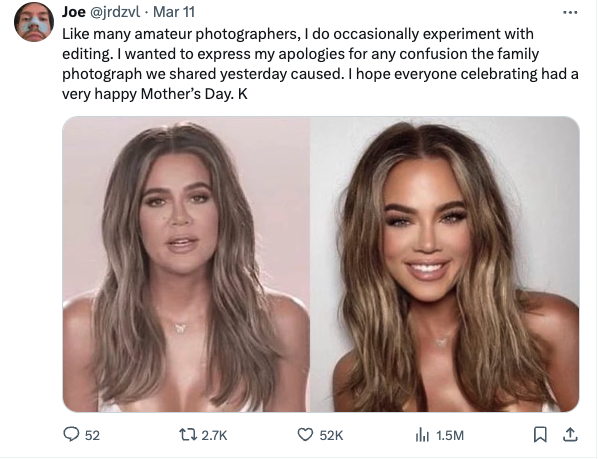
Stage 2 was noticing real life friends and acquaintances utilizing popular apps to create idealized photos of themselves for social media. Who doesn’t have a friend who looks completely different on Instagram because of FaceTune? Or who uses an avatar created by Lensa AI?
A video capturing the website of Lensa AI and showing how they advertise their app and AI-powered photo manipulation
Stage 3 of the transition to the post-truth era is the proliferation of deepfakes featuring notable people: with realistic synthetic media (audio, photos or videos) making them do and say fabricated things. Our sense of reality is being completely upended.
And Stage 4 may be deepfakes/synthetic media featuring regular people like you and me. It will become incredibly easy to create and disseminate them. In a way, Lensa AI already ushered this in for millions of people around the world.
The “Infocalypse” is already here
Synthetic media is here to stay and trends have been accelerating at a breakneck speed over the past 3 months. You don’t believe me? Here are some news stories that made headline news since January:
January 15 – Mashable: "Taylor Swift, Selena Gomez deepfakes used in Le Creuset giveaway scam"
January 29 – AP News: “X pauses some Taylor Swift searches as deepfake explicit images spread”
February 15 – The Guardian: "OpenAI launches tool that instantly creates video from text"
February 22 – Washington Post: "Bobbi Althoff deepfake spotlights X’s role as a top source of AI porn"
February 24 – BBC: "Piers Morgan and Oprah Winfrey 'deepfaked' for US influencer's ads"
March 1 – Washington Post: "Tech writer Kara Swisher has a new book. Enter the AI-generated scams"
March 4 – BBC: "Trump supporters target black voters with faked AI images"
March 5 – 404 Media: "Inside the World of TikTok Spammers and the AI Tools That Enable Them"
March 8 – The Verge: "Florida teens arrested for creating ‘deepfake’ AI nude images of classmates"
March 9 – Engadget: "AI Marilyn Monroe adds to the list of dead celebrities digitally resurrected without consent"
March 12 – Forbes: "AI Nudes Of Celebs Like Margot Robbie And Selena Gomez Are For Sale On eBay"
March 12 – Forbes: "Deepfaked Celebrities Hawked A Massive Trump Scam On Facebook And YouTube"
March 12 – Wired: "Your Kid May Already Be Watching AI-Generated Videos on YouTube"
March 15 – 404 Media: "Horrific AI-Generated Breastfeeding Images Bypass Facebook’s Moderation"
Let’s go back to the headline from March 8 - about the students creating pornographic deepfakes of their classmates. The details are absolutely disturbing:
Two Florida middle schoolers were arrested in December and charged with third-degree felonies for allegedly creating deepfake nudes of their classmates. A report by Wired cites police reports saying two boys, aged 13 and 14, are accused of using an unnamed “artificial intelligence application” to generate the explicit images of other students “between the ages of 12 and 13.” The incident may be the first US instance of criminal charges related to AI-generated nude images.
Two middle schoolers aged 13 and 14.
If they could do that, now in early 2024, imagine what will happen when these technologies become more accessible... and more sophisticated.
A New Grim Reaper Meme?
There is a famous meme that shows the grim reaper knocking on doors. If we were to apply this to Big Tech, I would propose that door 1 is “privacy”, door 2 is “perception of reality” and we have yet to see what door 3 could be. But these massive changes have a profound effects on our lives.
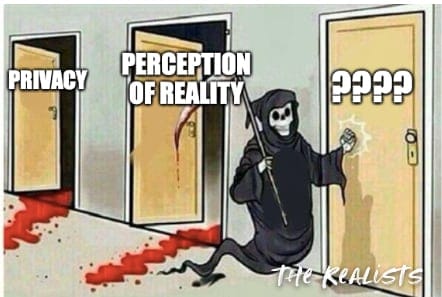
“Psychosis” and “The Shock Doctrine”
The definition of “psychosis” – a serious mental health disorder – is this:
"Psychosis is a condition of the mind that results in difficulties determining what is real and what is not real."
I’m reminded of the powerful book The Shock Doctrine by Naomi Klein. In it, she argues that when people are distracted, feeling fragile, or gripped by crises, it is far easier to manipulate them: “in moments of crisis, people are willing to hand over a great deal of power to anyone who claims to have a magic cure.”
Not being able to make a distinction between what is real and what is fake is deeply disorienting. Are these new technological tools ushering in the “post-truth” era making us more gullible and easier to manipulate? I’d venture to say yes.
A Silver Lining?
All this sounds very grim. But there is another side - a potential silver lining.
What is something you cannot fake or artificially alter with technology? A real life meeting. Any event happening away from screens.
I wonder if the onslaught of fake synthetic media will have a backlash, turning people off from online worlds and making them more prone to spend time in “the real world” away from devices.
Could this be the "cure" for excessive hours spent in front of screens? Making us appreciate the real, offline world more, where digital illusions can't intrude?
Maybe. At least, this is where I would immediately seek refuge.
Elena
💌 Did you enjoy this post? Share it with a friend!
☁️ You can follow me on Mastodon (my favorite network), Bluesky and Threads. All my other social media links are available here.
📽️ If you'd like to support my work, you could buy or rent my documentary The Illusionists on the globalization of beauty. Watch the opening:
✏️ If you'd like to say hi, my contact information is here
💬 If this post resonated with you, please leave a comment!


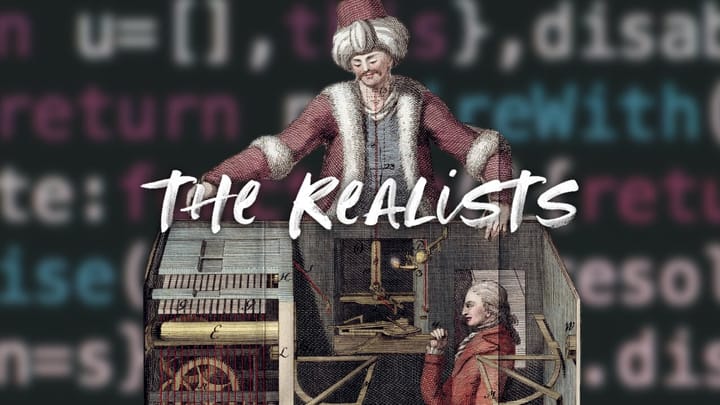
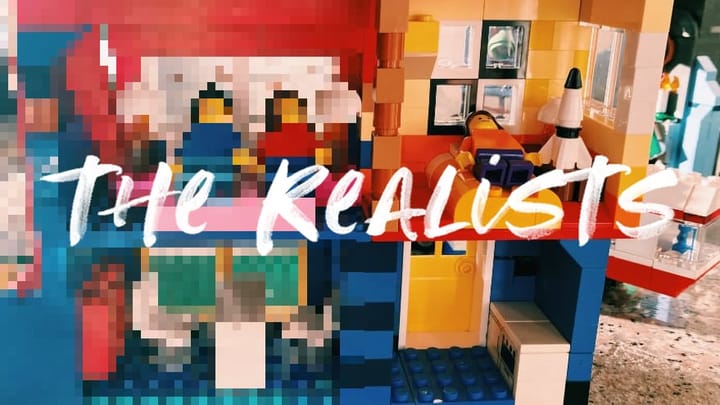
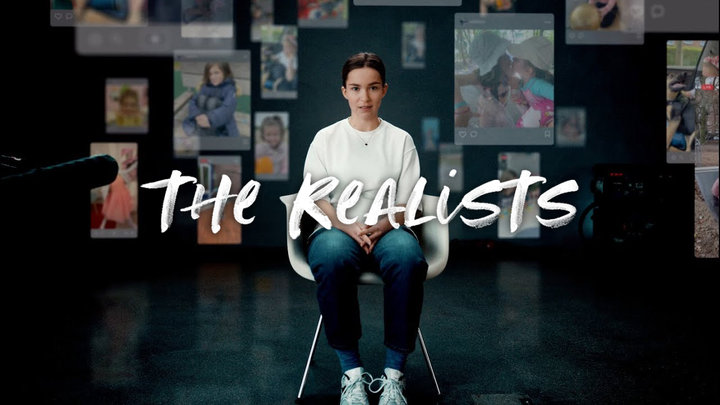
Comments ()